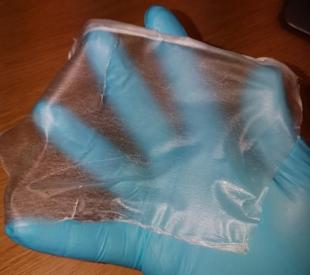Post date:
Dr Norbert Radacsi, Antonios Keirouz and Mei Zhang from the School’s Institute for Materials and Processes (IMP), and Dr Anthony Callanan from the Institute of Bioengineering (IBioE), are part of a team which produced this super-thin 'artificial skin' using nanoscale technology.
Nozzle-free electrospinning
The innovative dressing was created using a recently developed method known as nozzle-free electrospinning. Electrospinning occurs through the rotation of a cylinder above a pool of solution containing the two components of the fabric.
As the cylinder spins under high voltage and temperature, tiny fibres are quickly produced from the liquid and spun onto an adjacent hot surface. As the fibres cool, the fabric is formed.
Medical applications
The resulting fabric dressing can be custom-matched in thickness and elasticity to specific areas of the human body, and is able to be absorbed by the skin’s own tissue as it heals.
Research will now focus on further developing and testing the material for medical use, which the team expects may take about four years.
Efficiencies
Commenting on their breakthrough, Dr Radacsi said “Our technique is a cost-effective way of making artificial skin adapted for all areas of the body, to accelerate the wound healing process”.
Antonion Keirouz added, “Dressings made from this new fabric would be absorbed by the body, reducing the need for frequent changes”.



